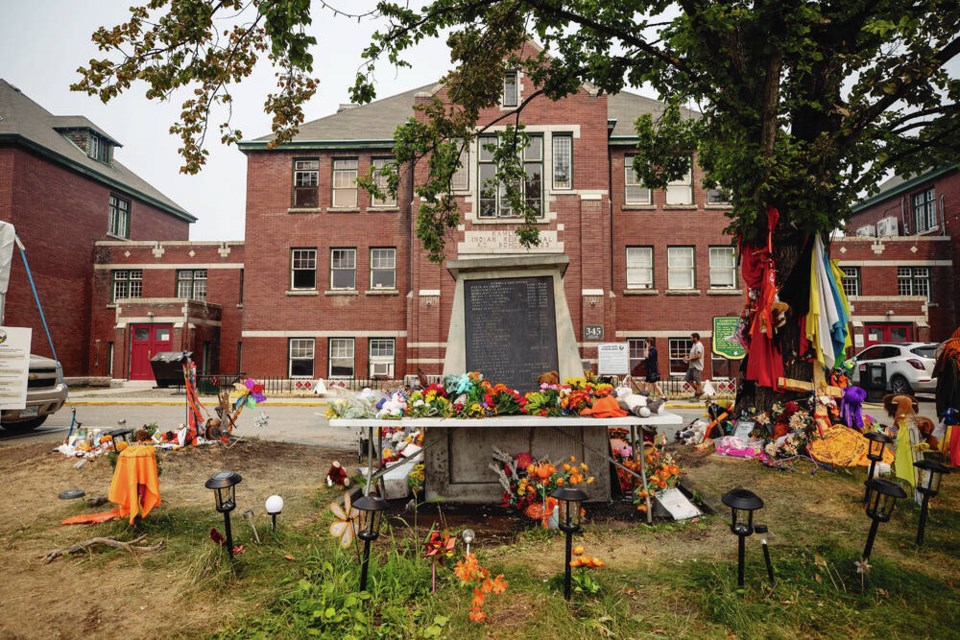What would Emily Carr think?
The Canadian icon whose paintings of coastal First Nations art and Pacific forestscapes put Victoria on the world’s art map was born in Victoria 150 years ago. In recent years, the two subjects that she sought out most as a painter have emerged as major social, political and economic issues in B.C.
If she were alive today — and yes, that would be impossible even with recent medical advances — what might Carr think of the past year’s discoveries at former residential schools? What would she think of the fight to save B.C.’s last remaining old-growth forests?
We know that Carr rejected many aspects of her upbringing. As the second-youngest child born to English parents who held fast to British traditions and customs in a town considered to be more English than England itself, she grew up in a culture of British Empire, entitlement and largely unquestioned superiority. Her family was conservative, conforming, church-going and God-fearing.
In 1890, a couple of years after her parents died, young Emily persuaded her guardians to allow her to spend part of her inheritance on travel, tuition and board to attend art school in San Francisco. It was her first move in a life-long rebellion against the expectations of family, community, class and upbringing.
She continued to choose her own path. She refused to ride sidesaddle like a prim English miss. She decided to remain single to focus on her career — a highly unusual decision for a young woman in the first years of the 20th century.
She journeyed to France in 1910 for the express purpose of studying “what this ‘new Art’ was about,” she wrote in her autobiography Growing Pains (1946). “Something in it stirred me but I could not at first make head nor tail of what it was all about. I saw at once that it made recent conservative painting look flavourless, little, unconvincing.”
Fascinated by First Nations cultures and their art and revelling in B.C.’s wild landscapes, she travelled extensively up the coast and into the Interior, staying in remote villages and getting to know their residents as she painted them, their buildings and art, and the surrounding ancient forests.
She spent many summers living rough in cabins, under canvas and — her favourite — in a caravan she outfitted and would park at Goldstream, in Metchosin, the Highlands, and other places around the region, where she would paint, with her dogs, monkey, parrot and pet rat at hand.
All of those choices, adventures, inspirations and aspirations set Carr outside of mainstream early 20th-century Victoria society and thinking. She was eccentric. She was maverick.
She was either ahead of her time or she lived in the wrong place to be truly valued for her independence, opinions and talent. Her efforts, for example, to introduce B.C. audiences to modern art went largely unappreciated, and she sold few paintings to locals.
Modern in outlook in another way, she formed friendships with many of the First Nations people she met during her painting expeditions. She opposed residential schools and the breakup of Indigenous families to stamp out their traditions. In the manuscript for her first book, Klee Wyck (published in 1941), she openly criticized missionary attitudes towards Indigenous people. (Her editor and friend Ira Dilworth, principal of Victoria High School, cut those passages before publication.)
This is not to idolize Carr. Her appreciation for First Nations cultures and art may have been why she undertook to document the longhouses and totems of the villages she visited. But also driving Carr was an underlying colonial belief, commonplace at the time, that those cultures were dying out. Nobody can escape their upbringing entirely.
The stories shared with the Truth and Reconciliation Commission and the past year’s findings at residential schools justify Carr’s century-old opinions about the damage done by the missionaries and residential schools.
If she were alive today, I suspect Carr would be horrified at a deeper, more personal level than most of us today are. The stories of abuse and neglect are about the children of families she knew from her painting expeditions. She may even have known the children.
In addition, she might well sympathize with the Fairy Creek protesters. She might even have joined the blockades.
Carr turned from painting Indigenous art to capturing the wildness, colour and movement of west coast forests only late in her career. Even then, she recognized that these, as with First Nations communities, were under threat.
Among her later works are Scorned as Timber, Beloved of the Sky; Odds and Ends; Trees in the Sky; and Sunshine and Tumult, which document the transformation of the forests in the Victoria region into cutblocks and stumpfields.



